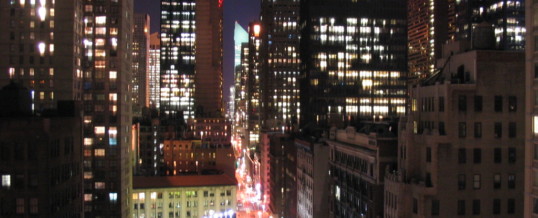
Once upon a time there was the Great Recession, and many development companies had to change strategy. Instead of building new condos to sell the units immediately on the market, they switched to renting a good portion of these apartments out after the crisis hit.
This is the case of Olive Park, in Williamsburg, where 32 out of 87 units were rented right after the Lehman Brothers crash.
Lately instead, we witness the sale of these very same apartments. The owner is now feeling that the market has improved, and he can get a reasonable price for his real estate.
There are also capital gain advantages if the Sponsor decides to keep some of the units as rentals and then unload them in a few years span. Therefore the practice is active on a pretty much ongoing basis.
Having too many Sponsor-owned apartments in a condo, however, can reduce the value of the other units on the market – especially given tightened lending standards.
But the fact that these Sponsor-owned units exist is also an opportunity for the investor that wants to buy a bundle of them at a discount to resell them in the future once, for example, the lease expires and the tenant moves out.
Read57
TriBeCa (a.k.a TRIangle BElow CAnal) lovers will enjoy the news of a new condo rising in the area, Read57. One of the few recent construction Read57 offers apartments at reasonable prices, hard to believe, if compared to the average of the area.
The developer, the John Buck Company, built the famous Standard Hotel.
Sales should begin as of mid June.
The project with 84 total units was already in the works in 2006. During the financial crisis, the developer decided to slow down construction to avoid beginning the marketing effort in the wrong period. Today, we are going towards a lack of available inventory in TriBeCa. In fact the number of units on the market in this area of the city is about 45% smaller than it was at the peak in spring 2009. Therefore the owner feels more confident in beginning the sale process now.
Prices are attractive: $814,000 for a one bedroom and $1.44 million for a two bedroom.
Let’s keep in mind that the average price for a one bedroom here (StreetEasy data) is $1.1 million.
Of course the square footage of these apartments is not comparable to the huge lofts typical of this area. The sizes at Read57 are more “normal” – for example, 713sf for a one bedroom.
Many units also have outdoor space.
Meanwhile, neighborhoods like West Chelsea and the Meatpacking District continue do be developed and enriched.
The famous Italian architect, Renzo Piano, has designed the new Whitney Museum, slated to be built in the District, on Gansevoort Street, by 2015.
The High Line, the park/walkway that took the place of an elevated train line, will double in length in June, when its second part, extending from 20th Street to 30th Street, will open to the public.
The new condominium called +aRt, located on 28th Street, near the High Line and the Hudson River, benefits from the enhancements taking place in the area. Sales here are going well: 34 apartments out of 91 are in contract while 8 have closed already.
Prices start at $530,000 for a studio and at 2.15 million for a two bedroom apartment.
The brief history of Manhattan office buildings construction – based on a study by the commercial broker firm Newmark Knight Frank – is reminisced by The Real Deal reporter Dan Weil.
The first huge construction boom dates back to 1910-1919 when 66 million square feet were built.
In the twenties that number went up to 106 million square feet, during one of the best periods of economic development in the history of America.
In the thirties, after the Wall Street crash, the building activity slowed down decisively: 48 million square feet were developed and only 4.8 million during the forties while the country was involved in the Second World War.
Skipping few decades, it is fair to note that 1972 was the single year that brought to light the most office building space last century. The World Trade Center and other buildings added some 23 million square feet to Manhattan inventory.
Taking a look at the recent history, we realize how in the period 2000-2009 the City has shed office space instead of adding new one.
The 9/11 tragedy alone removed 13.5 million square feet. Consequentially, the 7.6 million now under construction at the same site look like a small addition to the city skyline versus previous decades.
It is indeed a new trend, with the development of new technology, that more and more professionals don’t have the need to necessarily be at the office. Instead, many are opting to telecommute. Consequently: more quality, less quantity in the development world of commercial real estate.
This is it for today, my Dear Friends.
I am always available to answer your questions and provide you with more information on your next real estate investment in the Big Apple.
I will be glad to get back to you.
Warm Regards,
Riccardo Ravasini
MAY
2011


